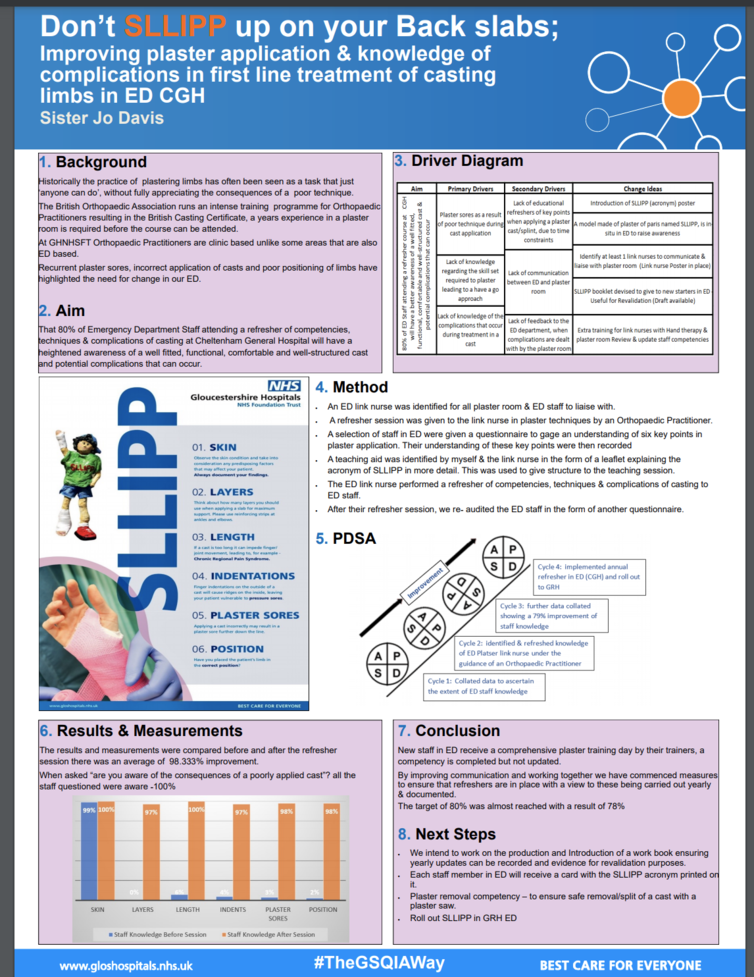Plaster room staff routinely apply Back Slabs and assess complications, when closed the Emergency Department staff apply their own first line treatment plasters to new patients and it is these patients I have focused on.
Staff in Emergency Department have a comprehensive introduction to casting by their own trainers, due to time constraints and over-looking the need for updates, refreshers in technique and complications aren’t available within the department.
Having assessed and audited unsatisfactory new patient plasters from the Emergency Department in clinic and being aware of the number of Datix linked to plaster sores, a need for change was evident.
The aim was that over a six month period, 80% of Emergency Department staff who attended a refresher of competencies, techniques and complications of casting would have a heightened awareness of applying a well fitted, satisfactorily structured, functional, comfortable plaster and gain knowledge of the complications that may occur.
I introduced a simple acronym to base teaching from –SLLIPP (Skin Layers Length Indentations Plaster sores Position).
A Link nurse from the emergency department enabled me to collect baseline data in the form of a questionnaire, training to the link nurse was implemented. The nurse gave the up-dates and a further questionnaire given to assess improvement. This was well received.
Prior to the updates staff had just a 19% understanding of the 6 key points of a cast application (SLLIPP).
Following updates the data showed staff understanding at 98%. Benefiting staff and patients.
The simplicity of this Quality Improvement project was the key to its success and a familiar face is key to implementing a change within a department especially where there is a high turnover of staff.
Opportunities now lay in rolling this out in the Emergency Department at Gloucester Royal and make the Association of Orthopaedic Practitioners aware.

You can download the full project poster HERE

